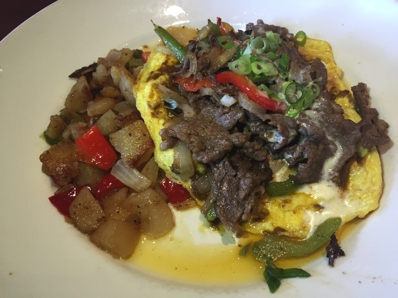 In an era where online marketing dominates the restaurant industry, search engine optimization, or SEO, serves as a critical touch point to grow your business. A recent study by Chadwick Martin Bailey revealed that a whopping 92 percent of consumers search for restaurants online before making their dining decision. The key to success comes from getting these people to actually find your restaurant website. So how will you separate yourself from the hundreds of thousands of restaurant websites out there? The answer [or at least some of the answer] comes from understanding your target consumer, what they search for online when trying to find your restaurant, and how you can best include these elements in your restaurant’s website. For the sake of simplicity, we’ll just use Google when talking about search engines. And when mentioning a restaurant’s website, this can include its Facebook page or any other platform you use for your restaurant’s online presence. Defining SEO SEO is a term thrown around quite a bit, often misused in the process. For those unfamiliar, SEO involves using relevant keywords to get your website to appear as high as possible on a search page. For example, a Mexican restaurant in Summerlin may include phrases like “Rated best Mexican restaurant in Summerlin” and “Summerlin’s favorite Mexican Restaurant” throughout its website in order to be at the top of the list when someone Google’s ‘Mexican Restaurant Summerlin.’ SEO is all about content. The more key phrases you type into your website, the higher your restaurant will rise toward that critical Google page one spot. And now that we’re on the same page with SEO, let’s outline the process for determining keywords to add to you website’s content. Know your target customer Who do you want to find your restaurant online? While the obvious answer is ‘everyone,’ think critically about what type of person is conducting a Google search when your restaurant ideally pops up. If you’re a family place, do parents look you up as a place to take the kids, or do the kids look you up as a fun place to celebrate a birthday? Knowing who exactly is looking for you helps determine the approach and dialect to use for your keyword content. Parents may search for ‘kid friendly’ while kids may search for ‘yummy pizza.’ Next is forming the content itself. Know your distinguishing terms Typing ‘Mexican Restaurant Las Vegas’ into your content will throw you in with places on the Strip and across town while a simple change to ‘Mexican Restaurant [shopping center or intersection X] will draw in the customers in your area. On a related note, Google automatically filters for geography, so you don’t have to worry about including your exact location every time [Google won’t bring up restaurants in Seattle for someone conducting a search in Las Vegas]. "Give yourself opportunity to include more content with more keywords and you’re well on your way to break away from the pack." Are you known for a specific dish, dessert or drink? Highlight the items that make you famous, in the frequent case where people search for terms such as ‘Best guacamole downtown.’
Additionally, promote features such as outdoor patios, views, date night and reservations. Consumers will typically search for a restaurant by feature, and while sites such as Yelp have these built in, you’re at an advantage if someone can skip that search entirely and just go straight to your website. Where to put these keywords To increase SEO, the natural response would then be to add more content to your site. Include an ‘about us’ section, history, locations and customer reviews that mention these keywords as often and as naturally as possible. Give yourself opportunity to include more content with more keywords and you’re well on your way to break away from the pack. Just remember to keep content first, and that SEO will only get people to your site. Good content is the only thing that will keep them there and get them on the path to walking through your actual doors. Common pitfalls to avoid Optimizing your website for keyword search is critical for attracting new customers, but equally critical is balancing SEO with ethical online marketing practices. Resist the temptation toward no-no’s such as ‘keyword stuffing’ [i.e. typing “Mexican Restaurant” hundreds of times and hiding it behind your color background]. Those who pursue unethical SEO are subject to the ‘Google death penalty,’ where your business will simply not turn up at all on a Google search. And in the world of internet law, there is no fair trial. If Google determines that you’re engaging in unethical practice, they’ll take you off their search platform without ever informing you. Google ‘BMW Google Death Penalty’ for a hard-hitting example.
1 Comment
 Elephant Bar, a chain that covers six states across the West Coast and Midwest, has redesigned its brunch menu to put an interesting twist on morning favorites. Additions such as gooey butter cake French toast, sunrise breakfast tostadas and Philly cheese steak frittata do just that, integrating fun flavors from the restaurant’s lunch, dinner and dessert menus. Elephant Bar has expanded its drink menu to the brunch side as well. Bloody Marys with bacon and cheese, frozen peach bellinis and classic mimosas highlight a diverse cocktail selection. Brunch patrons are also welcome to enjoy Elephant Bar’s extensive lunch menu, which features more American fare with a global twist, plus a lengthy cocktail list. As a casual chain, Elephant Bar comes at quite a reasonable price point, delivering good value for those looking for a low-key dining experience. Gotta love that namesake elephant bar as well! Elephant Bar also prides itself as a scratch kitchen, where “99.9% of all items are made from scratch” [the only exception is their cheesecake], and “nothing is frozen or from the can.” Elephant Bar is located across LA, with its Torrance location at 21227 Hawthorne Blvd, Torrance, CA 90503. Average out-the-door price for appetizer, entrée, dessert and 1-2 drinks is ~$50/person. For more information visit Elephant Bar online.  Lowering prices is a surefire bet to increase customer turnout [supply equals demand, after all], but it may not always be the most economically viable way to promote your restaurant. Tons of options exist beyond your classic 10% discount, or heaven forbid, 50% discount, that will bring more people through your door. Experimenting with non-monetary promotions may very well do a better job of driving traffic while saving you money in each transaction. When I say ‘non-monetary promotion,’ I mean that the promotion doesn’t revolve around a direct price discount, such as 10% off. It all revolves around consumer psychology: Sometimes offering more product rather than a lower price is perceived to have greater value. Of course all promotions do come at a cost, but the key is to frame them in terms of the product rather than the price. This method allows customers to focus away from the money they spend, devoting their attention toward the benefits they receive. To put this into clearer terms, let’s use a non-business example. You call on a friend to help you move into a new house. In exchange for their time and effort, you take them out to dinner after you’re done. Could you hand them some cash? Of course, but introducing hard money removes the personal aspect of the transaction. Your friend now feels less like a friend and more like underpaid labor. The meal, on the other hand, demonstrates far greater value by showing your personal gratitude, even though it probably costs less than the cash you’d otherwise dole out. Giveaways Restaurants have so many ways to show customers this kind of ‘personal’ gratitude. Free food and drink promotions are at the top of the list. Appetizers, sides, desserts, add-ons and premium beverages are all great ways of enticing someone to come in through your door. One of the biggest benefits of these promotions, of course, is that the retail value, or customer’s perceived value, is far greater than your cost of making the product. If you were to ask most customers what they think when they see “free appetizer,” very few of them would respond with “a few bucks for the food and labor.” Few of them would allude to the appetizer’s menu price. In the eyes of must customers, something like a free appetizer equates to a fuller restaurant experience that they wouldn’t otherwise enjoy on their own. Take full advantage of these promotions by making these giveaways experimental/new menu items—Nobody is going to turn down a freebie, and they can provide valuable feedback to determine if the item will be a profitable addition to your repertoire. You can also use these promotions to clear out inventory, such as ingredients nearing the end of their prime or wine that needs to be cleared out to make room for a new shipment. In both cases, be sure to serve only what meets your quality standards. Everything tastes better when it’s free, but subpar products will take away from the experience as a whole as well as your overall brand. Bundled menu items Prix-fixe, tasting menus, ‘Restaurant Week’ menus and the like all reflect the same value-add of a more comprehensive restaurant experience for less than what you’d pay each individual component. Bundling works to your advantage in multiple ways, presenting customers with ‘a deal they can’t refuse’ while at the same time upselling them on items they may not order a la carte. If you decide to experiment with bundling, be sure to keep two huge points in mind. First, choose items that best reflect your restaurant. Customers want your most famous appetizer, entrée and dessert. If you try to throw in a lower-tier item into any part of the mix, your bundle runs the risk of being seen as a scam. Second, your portion sizes need to be the same as they would be if ordered a la carte. Unless you’re adding more courses [i.e. serving half-portions of two entrees], customers will be furious if their entrée is 2/3 the size of their neighbor’s. These are just a few food-based promotional options, and each category presents seemingly endless possibilities. People go out to eat with the intention of enjoying great food, atmosphere and service, so push that benefits-based mindset rather than bringing up the price they will pay. |
AuthorBenjamin Brown is a seasoned restaurant writer and hospitality consultant, serving up SoCal's hottest food news and reviews. Categories
All
Archives
June 2021
@Foodie_Biz |
|
Home
About
Blog
Consulting Tips
Contact
Legal
|
Foodie Biz provides restaurant news and reviews for the food community, as well as consulting advice for restaurant owners and other hospitality professionals.
Contact Foodie Biz for media opportunities and freelance consulting projects. Contact Foodie Biz |









